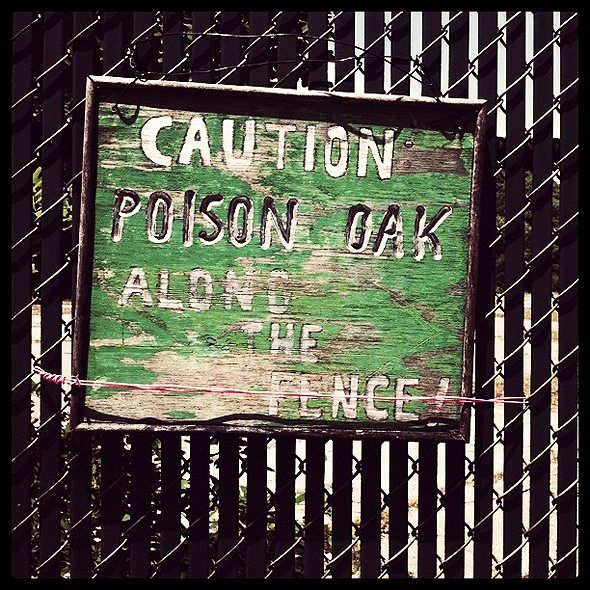Poison Oak: Street Art Or Dire Warning?

A reader sent us the iPhone photo you see above along with the following text:
Voorhies ave by the train station. fence guarding the empty lot.
Having, thank heavens, no personal experience with poison oak, I took to the vast pages of Wikipedia to learn me some more:
Toxicodendron diversilobum, western poison-oak or Pacific poison-oak (syn. Rhus diversiloba) is in the Anacardiaceae family (the sumac family) and is a plant best known for its ability to cause allergic rashes after contact. Western poison-oak is found only on the Pacific Coast of the United States and of Canada.
It is extremely common in that region, where it is the predominant species of the genus; the closely related Atlantic poison-oak (T. pubescens) occurs on the Atlantic Coast. The hyphenated form “poison-oak” is used, rather than “poison oak” to clearly indicate it is not a variety of oak, just as “poison-ivy” is not a variety of ivy.
So my question is, or rather questions are:
- Why is poison oak allegedly shmeared all over this fence, guarding the empty lot, near the Voorhies Avenue entrance to the Sheepshead Bay Road train station?
- If, indeed, there is poison oak around there, who would take the time to announce that grim news by painting such a pretty, antique -looking sign? I don’t know about all of you, but I would definitely hang that sign up at my place. It’s artfully done and matches my drapes.
Has anyone else seen this sign? Is there any truth to it? What is the dealio with this poison oak craziness?



